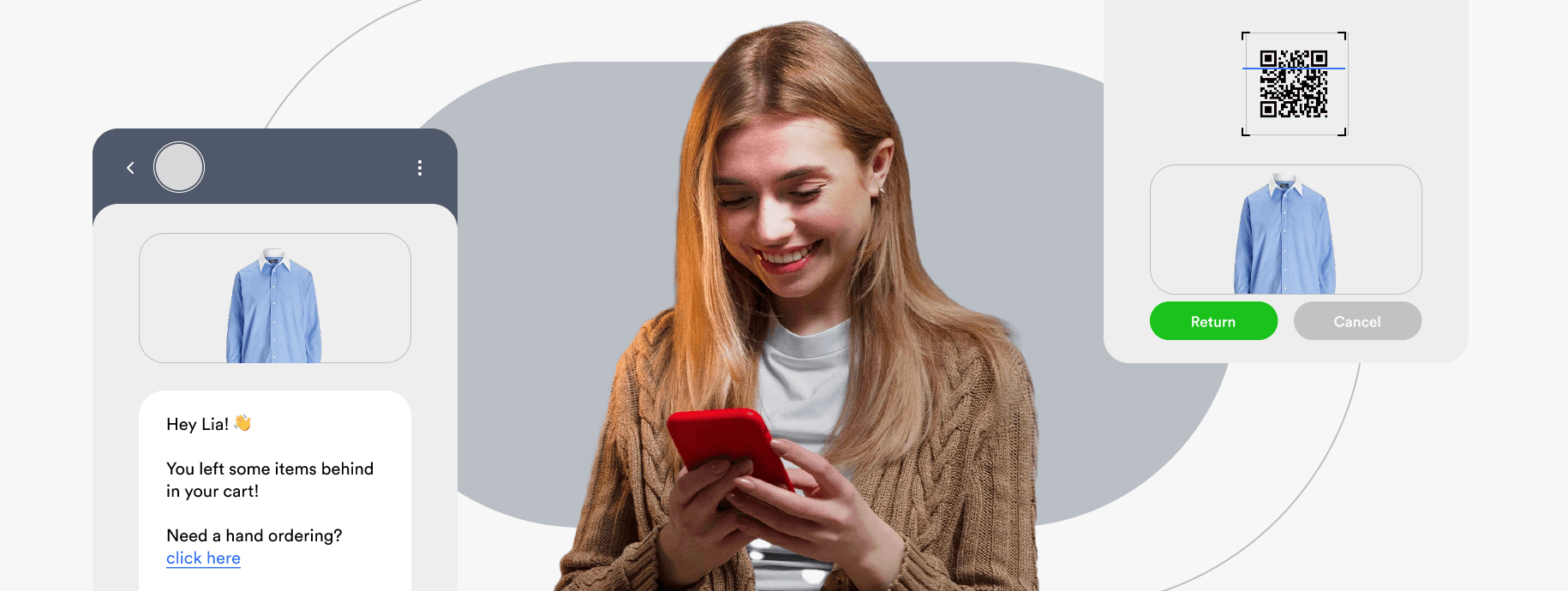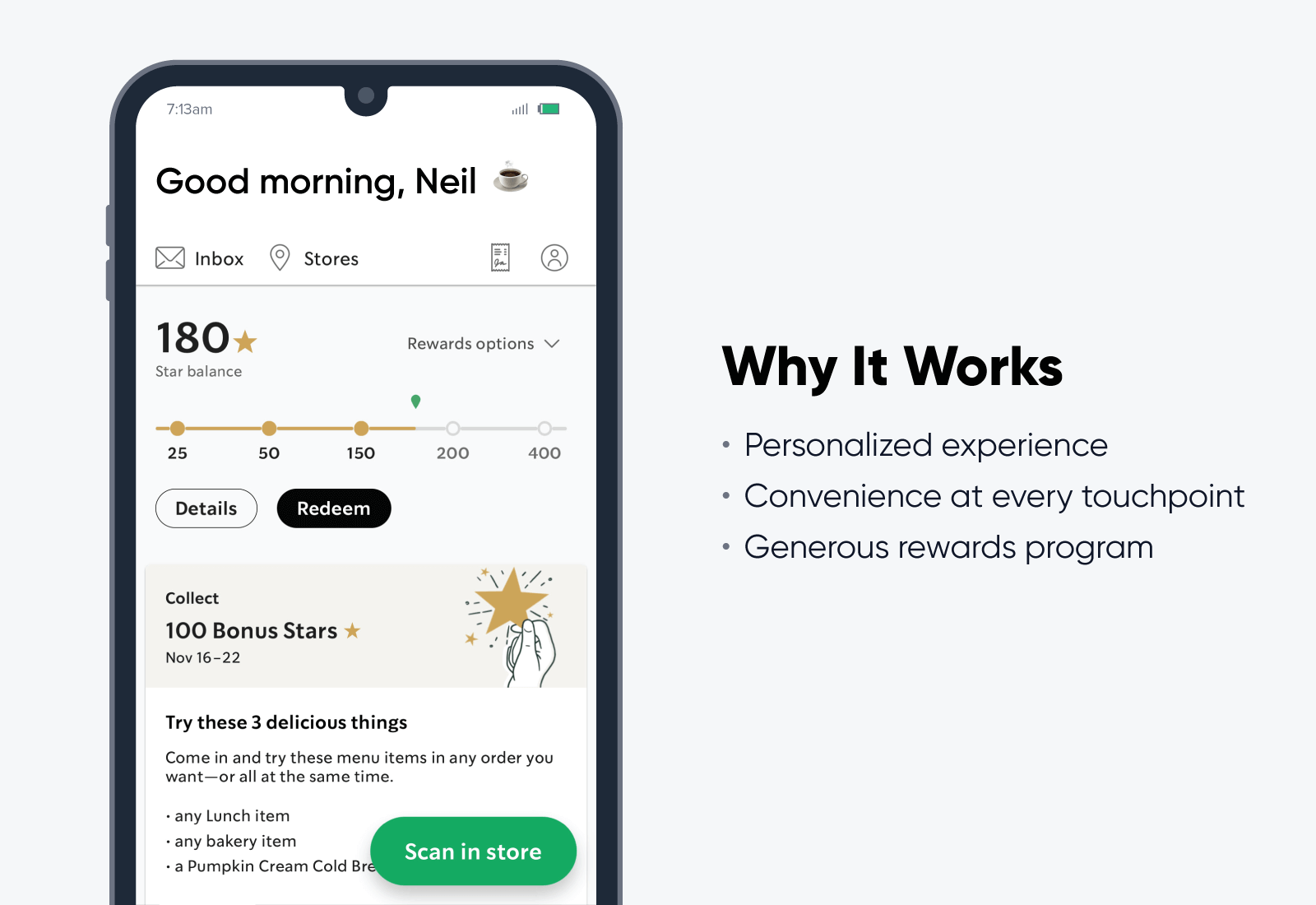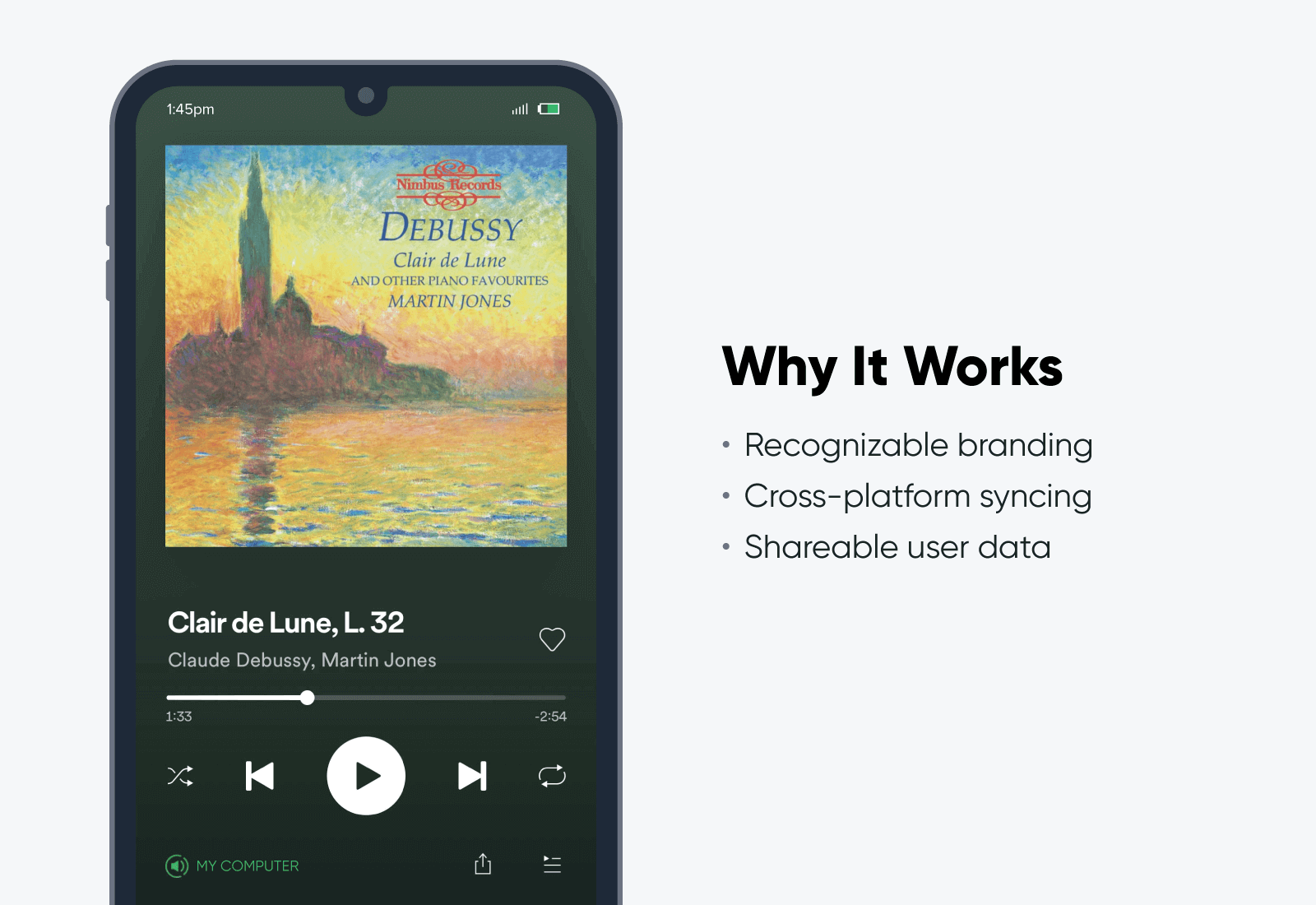Companies use omnichannel marketing to create a cohesive brand experience that can boost customer engagement and drive sales. We take a look at how it works, explore real-world examples, and help you decide if it’s right for your brand.
What is Omnichannel Marketing?
Omnichannel marketing is a customer-centered strategy focused on creating a cohesive customer experience across multiple channels and platforms. Its fundamental goal is to build a unified brand presence no matter where your customers encounter your brand.
In today’s fast-paced digital world, omnichannel marketing is a game-changer for brands striving for cohesive and integrated messaging across multiple platforms.
Unlike single or multi-channel marketing, which often operates in silos, omnichannel marketing ensures a smooth customer experience whether they’re engaging via social media, email, in-store, or through an app. Understanding and implementing omnichannel strategies helps you stay ahead of the curve and meet customers where they are.
Omnichannel Marketing focuses on:
- A customer-centric approach
- Consistent cross-channel branding and voice
- Personalized, interest-based customer messaging
- A deep understanding of the customer journey
Once upon a time, people engaged with a company across just two or three channels. If you were looking for a new TV, you might come across an ad touting some big brand’s latest and greatest technology. Then, you’d go to a brick-and-mortar store to learn more and make your purchase. If you had a problem with your new purchase, you might have to make a phone call to a customer service line.
Seems pretty old-fashioned now, doesn’t it?
With advances in tech moving at lightning speed, companies now have to engage their customers across many platforms and channels. These marketing channels might include:
- Desktop, mobile, and tablet versions of your website
- A mobile app
- Social media platforms like Facebook, Twitter, and Instagram
- Video platforms like YouTube and TikTok
- Web, live chat, email, phone, or social media customer support
Omnichannel marketing aims to ensure that your brand is instantly recognizable to your customers so that no matter where they interact, they encounter consistent, on-brand messaging, functionality, and visuals. It’s a strategy that puts your customer at the center of all your marketing channels, engaging them with a unified voice that reflects your company’s values and value proposition.
In this blog, we’ll explore what omnichannel marketing entails, differentiate it from multichannel marketing, and explore its numerous benefits. We’ll also guide you through building an effective omnichannel strategy, share real-world examples, and discuss the latest trends. Learn how to determine if an omnichannel approach is right for your brand and how you can craft a more unified and impactful marketing strategy.

Omnichannel vs. Multichannel Marketing: What’s the Difference?
The main differences between omnichannel and multichannel marketing lie in how they’re implemented:
- Multichannel marketing involves connecting with customers across multiple channels. These channels (e.g., website, app, social media, and customer service) work independently and thus don’t provide a cohesive experience.
- Omnichannel marketing focuses on the customer experience across all channels and seeks to create a consistent, positive experience at every touchpoint in the customer lifecycle – all while keeping the customer at the center of the strategy.
Consider this example of a retail brand:
- An omnichannel approach would involve integrating online, offline, and mobile touchpoints to provide a seamless shopping experience, like allowing customers to reserve products online and pick them up in-store. All the dots are connected as your customers move across different channels and platforms – from encountering their first ad to downloading a mobile app to making a purchase. All messaging and transitions feel smooth and interconnected.
Not only is your branding and messaging consistent, but each channel has information about how your customer interacts that informs and personalizes that experience, no matter where the customer encounters your brand.
The approach will likely improve customer satisfaction and yield higher conversion rates. However, it does require a significant investment in technology.
- In contrast, a multichannel approach may involve having separate online and offline sales channels, leading to a fragmented customer experience where each piece of the customer lifecycle puzzle functions as a separate unit. For example, one department may be dedicated to advertising, while another is focused on your website, another manages social media, and yet another is responsible for your mobile app.
This might be more accessible and cost-effective for companies of all sizes, but it may result in disjointed customer experiences and lower customer loyalty.
While each strategy has its merits, omnichannel marketing provides a more comprehensive and cohesive customer experience, leading to increased customer loyalty and business success.
Omnichannel Marketing Strategy Benefits
Let’s face it: if building an effective and truly cohesive omnichannel marketing strategy was easy, every business would be doing it. So, let’s take a closer look at the rewards that make the effort worthwhile. Here are a few of the proven benefits of an omnichannel approach:
- Improved Customer Experience and Satisfaction
An omnichannel strategy enhances the customer experience by providing a seamless and integrated journey across multiple touchpoints. By aligning all touchpoints, customers can easily transition between channels, resulting in a more enjoyable and satisfying experience. - Increased Customer Loyalty and Retention
Omnichannel marketing helps build stronger relationships with customers, leading to increased loyalty and customer retention rate. If provided a consistent and personalized experience, customers are more likely to return and make repeat purchases, resulting in long-term business success. - Better Data Collection and Insights
An omnichannel strategy allows for better data collection and insights, providing valuable information about customer behavior and preferences. By analyzing data from various touchpoints, businesses can make data-driven decisions to improve their marketing strategies and better serve their customers. - Improved Marketing ROI and Efficiency
Omnichannel marketing can lead to improved marketing ROI and efficiency. By providing a cohesive experience, businesses can reduce marketing costs and increase revenue, resulting in a higher return on investment. - Consistency in Brand Messaging Across Platforms
An omnichannel strategy ensures consistency in brand messaging across all touchpoints, leading to a stronger brand identity. By delivering a consistent message, businesses can build trust with customers and establish themselves as a reliable and trustworthy brand.
Schedule a live product demo with our team today if you’re ready to see how a customer engagement platform looks.
How To Build an Omnichannel Marketing Strategy
Step 1: Understand Your Customer Journey
Start by mapping out your customer journey. Identify all the touchpoints and interactions your customers have with your brand. This includes everything from social media engagement and email communication to in-store visits and customer service interactions. Understanding these touchpoints helps you see where customers might face challenges and where you can improve their experience.
Step 2: Integrate Your Channels and Data
Next, integrate your marketing channels and data. Use Customer Relationship Management (CRM) systems and omnichannel marketing automation tools to collect and analyze data from various touchpoints. This integration allows you to create a unified view of your customer, enabling you to deliver more personalized and relevant messages.
Step 3: Create Consistent and Personalized Content
Consistency is key in omnichannel marketing. Develop content that is not only consistent across all channels but also personalized for different stages of the customer journey. Tailor your messages to address the specific needs and preferences of your customers at each touchpoint, enhancing their overall experience.
Step 4: Implement Technology Solutions
Leverage technology to support your omnichannel strategy. Tools like marketing automation platforms, data analytics software, and CRM systems can help you manage and integrate your channels more effectively. These solutions enable you to streamline your processes and ensure that your marketing efforts are cohesive and efficient.
Step 5: Monitor, Analyze, and Optimize
Finally, continuously monitor and analyze your omnichannel strategy. Use analytics to track the performance of your campaigns and identify areas for improvement. Regularly optimize your strategy based on these insights to ensure that you are meeting your customers’ needs and achieving your marketing goals.
By following these steps, you can build a robust omnichannel marketing strategy that enhances customer engagement, drives sales, and fosters long-term loyalty.
Omnichannel Marketing Examples
Omnichannel marketing strengthens your brand and helps you create a winning customer experience. In these omnichannel marketing examples below, you’ll see how leading brands achieve this. Their successful customer-centered approaches put personalization, consistent messaging, and a cohesive cross-platform experience front and center. Consider these three examples:
Starbucks — Rockstar Rewards Program

Starbucks is so ubiquitous that unless you live in a small town or rural area, you may have one on nearly every corner. Their storefronts and drive-thrus are everywhere, making it convenient to get your caffeine fix.
They have a well-designed app that not only knows your favorite drink and pastry order but allows you to pay through a quick QR code scan. And the cherry on top? A generous rewards program that lets you collect points (called “stars”) to earn free coffee, pastry, food, or even branded merchandise.
Why it works: Starbucks makes use of customer data to personalize your experience and adds convenience at every touchpoint.
Grammarly — Consistent Messaging Across Many Channels

Grammarly is a writing tool that helps you correct your spelling and grammar. They create buzz through a social media strategy that combines fun memes with educational content.
Their content marketing department attracts new customers by creating blog posts that answer the grammar questions people commonly search Google for. An email marketing program delivers personalized writing statistics that users frequently share on social media for bragging rights — an excellent example of gamification in action.
Grammarly’s app offerings include a web-based editor, browser plug-ins, and a mobile keyboard that helps users perfect their writing. Truly omnichannel!
Why it works: Grammarly uses a friendly, informative, and fun messaging tone across every channel, creating a memorable (and often shareable) brand experience.
Spotify — Unified Experience No Matter Where You Listen

Spotify’s omnichannel approach focuses on ensuring users can access the music and podcasts they love anywhere they happen to be. The company offers apps for web, desktop, and mobile, and all the apps sync brilliantly.
Listening to a podcast in your car on your lunch break? You can pick up where you left off when you get back to your desk. And no matter where you’re listening, the customer experience is the same.
Spotify gets bonus points for their annual “Wrapped” campaign, which uses data to generate a shareable story of your year in music, highlighting what you listened to most.
Why it works: Spotify’s focus on a cohesive, highly functional listening experience across devices drives customer engagement and loyalty.
Some other great omnichannel marketing examples:
- Sephora’s integration of its mobile app, website, and physical stores allows customers to access their “Beauty Insider” accounts, view product reviews, and receive personalized recommendations seamlessly.
- Walmart’s “Order Online, Pick Up In-Store” service bridges the gap between online and offline shopping, providing convenience and flexibility for customers.
- Target’s Cartwheel app offers personalized deals and integrates with their online and in-store shopping experiences, enhancing customer engagement.
- Nordstrom’s omnichannel approach includes a robust online presence, in-store pickup options, and a seamless return policy, ensuring a consistent customer experience.
- Best Buy’s “Buy Online, Pick Up In-Store” service and their mobile app provide a cohesive shopping experience, allowing customers to easily transition between channels.
- Apple’s integration of its online store, physical stores, and customer support ensures a consistent and personalized experience for customers, regardless of the channel they use.
- Amazon’s integration of its website, mobile app, and physical stores (like Amazon Go) provides a consistent shopping experience. Customers can start a purchase on one platform and complete it on another, with their preferences and shopping history seamlessly integrated.
Service-Based Businesses
Service-based businesses, such as banks and healthcare providers, can also leverage omnichannel strategies. For example, Bank of America offers a unified experience through its mobile app, website, and physical branches. Customers can check their account balances, transfer funds, and even schedule appointments with a banker, all through integrated channels.
Omnichannel marketing is extremely versatile and can be applied across different industries:
- Hospitality: Marriott International uses an omnichannel approach by integrating its website, mobile app, and customer service. Guests can book rooms, check-in, and access loyalty rewards seamlessly.
- Automotive: Tesla’s omnichannel strategy includes an integrated online and offline experience. Customers can configure their cars online, schedule test drives, and receive updates through the Tesla app.
- Telecommunications: Verizon offers a consistent experience across its website, mobile app, and physical stores. Customers can manage their accounts, pay bills, and troubleshoot issues through any channel.
These examples highlight the versatility of omnichannel marketing, demonstrating how it can enhance customer experiences and drive business success across various industries.
Omnichannel Marketing Trends
Staying ahead in omnichannel marketing means keeping up with the latest trends, and artificial intelligence (AI) and machine learning are revolutionizing the field. These technologies help you analyze vast amounts of data to understand customer behavior and preferences. AI-driven tools can provide personalized recommendations, automate customer service through chatbots, and even predict future buying patterns, making your marketing efforts more effective.
With the increasing use of smartphones, mobile integration has become crucial. Customers expect a smooth experience whether they are shopping on their phones, tablets, or desktops. Ensuring your mobile app and website are well-integrated with other channels can significantly enhance customer satisfaction and engagement.
Personalization is no longer a luxury; it’s a necessity. Customers expect brands to understand their needs and preferences. By leveraging data from various touchpoints, you can create highly personalized experiences that resonate with your audience, fostering loyalty and driving sales.
Predictions for Future Developments
Emerging technologies like augmented reality (AR) and virtual reality (VR) are set to transform omnichannel marketing. Imagine customers trying on clothes virtually or visualizing furniture in their homes before buying. These technologies can create immersive experiences that drive engagement and conversions.
Customer expectations are continually evolving. In the future, customers will demand even more convenience, speed, and personalization. Brands that can anticipate and meet these expectations will stand out. This means investing in technology, data analytics, and customer service to stay ahead of the curve.
By keeping up with these trends and predictions, you can ensure your omnichannel marketing strategy remains effective and relevant, helping you build stronger relationships with your customers and achieve long-term success.
Is an Omnichannel Marketing Strategy Right for Your Brand?
Before diving into an omnichannel strategy, evaluating whether it’s the right fit for your brand is crucial. Here are some things to keep in mind when considering implementing an omnichannel strategy:
- Business Size and Resources: Implementing an omnichannel strategy requires significant resources. Smaller businesses may find it challenging to allocate the necessary budget and manpower. Assess your current resources and determine if you can sustain the investment needed for an omnichannel approach. Are your employees trained to manage and execute an omnichannel strategy? Can your current technology infrastructure support an omnichannel approach?
- Customer Base and Behavior: Understanding your customer base is key. Are your customers active on multiple channels? Do they expect a unified experience across these channels? Analyzing customer behavior can help you decide whether an omnichannel strategy will meet their needs and enhance their experience.
- Industry Specifics: Different industries have varying requirements and customer expectations. For instance, retail and e-commerce businesses often benefit more from omnichannel strategies compared to niche B2B companies. Consider the norms and trends within your industry before making a decision.
Consider the Pros and Cons of Launching an Omnichannel Strategy
| Pros | Cons |
| Enhanced customer experience Increased customer loyalty Better data collection and insights Higher sales and revenue | High initial investment Complex implementation Requires ongoing maintenance Potential for data security issues |
Ready to Take the Plunge?
- Conduct a thorough audit: Evaluate your current channels and identify gaps.
- Invest in the right technology: Choose platforms that integrate well with each other.
- Train your team: Ensure your employees are equipped to handle the new strategy.
- Start small: Implement the strategy in phases to manage risks and make adjustments as needed.
- Monitor and optimize: Continuously track performance and make improvements based on data insights.
By carefully considering these factors and following these steps, you can determine if an omnichannel strategy is the right move for your brand and how to implement it effectively.
Learn how to design a winning customer engagement journey
Supercharge your Omnichannel Strategy with CleverTap
CleverTap can help you elevate your omnichannel strategy by providing a unified platform that seamlessly integrates customer data across multiple channels. This allows you to meet your customers with consistent and personalized interactions across every touchpoint.
Clevertap’s Clever.AI is a game-changer for omnichannel marketing campaigns, offering advanced AI-driven capabilities that optimize user engagement across multiple platforms. By continuously analyzing user behavior, Clever.AI can predict future actions and segment users with high precision. This allows businesses to send highly personalized and timely messages and also provides real-time data insights that marketers can use to quickly adapt their strategies.
To learn more about how CleverTap can help you fine-tune your omnichannel campaign, talk to our expert or schedule a personalized demo here.
Shivkumar M 
Head Product Launches, Adoption, & Evangelism.Expert in cross channel marketing strategies & platforms.
Free Customer Engagement Guides
Join our newsletter for actionable tips and proven strategies to grow your business and engage your customers.















































